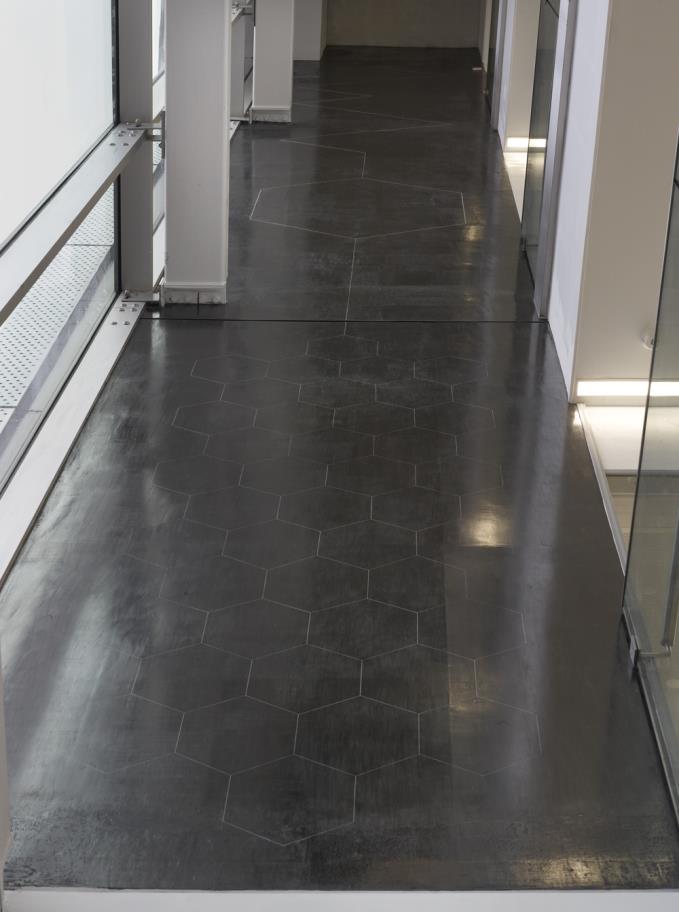The University of Manchester has this week unveiled a huge graphite artwork spanning three-floors of it's new £61m National Graphene Instituteon Oxford Road.
Earlier this week scientists from Columbia University unveiled a single atom thick light bulb
The £25,000 permanent artwork supposedly 'depicts the story of graphene' - the one atom-thick 'wonder material' first extracted from graphite in 2004 by two Manchester-based professors, Nobel Prize-winning Andre Geim and Konstantin Novoselov.
Novoselov personally invited Manchester-based artist and Whitworth Art Gallery curator, Mary Griffiths, to create the 13m x 2m work, titled 'From Seathwaite' after the small Lake District hamlet where graphite was first discovered in 1555.
Over one month, Griffiths and four assistants coated the white plaster wall with multiple layers of graphite, making a dense and reflective black surface, then cut three astract drawings into the black surface, representing graphite’s origins in the Lake District, its hexagonal structure, and its development at The University of Manchester into graphene.
 Graphite wall at the NGI
Graphite wall at the NGISir Kostya said: “It is impressive to see how much the sometimes tragic history of graphite is linked to North West, starting from the first graphite mines in Windscale Fire to graphene.
“I see Mary’s work as part of this history. But most importantly, her work can serve as a link connecting the episodes in the story still to be written.”
The gangly new work was unveiled ahead of the Graphene Week 2015, hosted by the University of Manchester from 22-26 June.
600 academics from over 40 different countries are expected at the international conference (the ninth such outing) to discuss the future application and commercialisation of graphene - which the University estimates has already attracted $2.4 billion in research funds.
Earlier this week scientists from Columbia University unveiled a single atom thick light bulb chip that superheats graphene to produce illumination.
"I was booked to do a stand-up routine about graphene during Graphene Week," says the Editor.
"Really?" We gasp.
"Yeah but I had to cancel," he says.
"How come?" we say.
"Because..." he smirks, "...it's the world's thinnest material."
Very good...
















